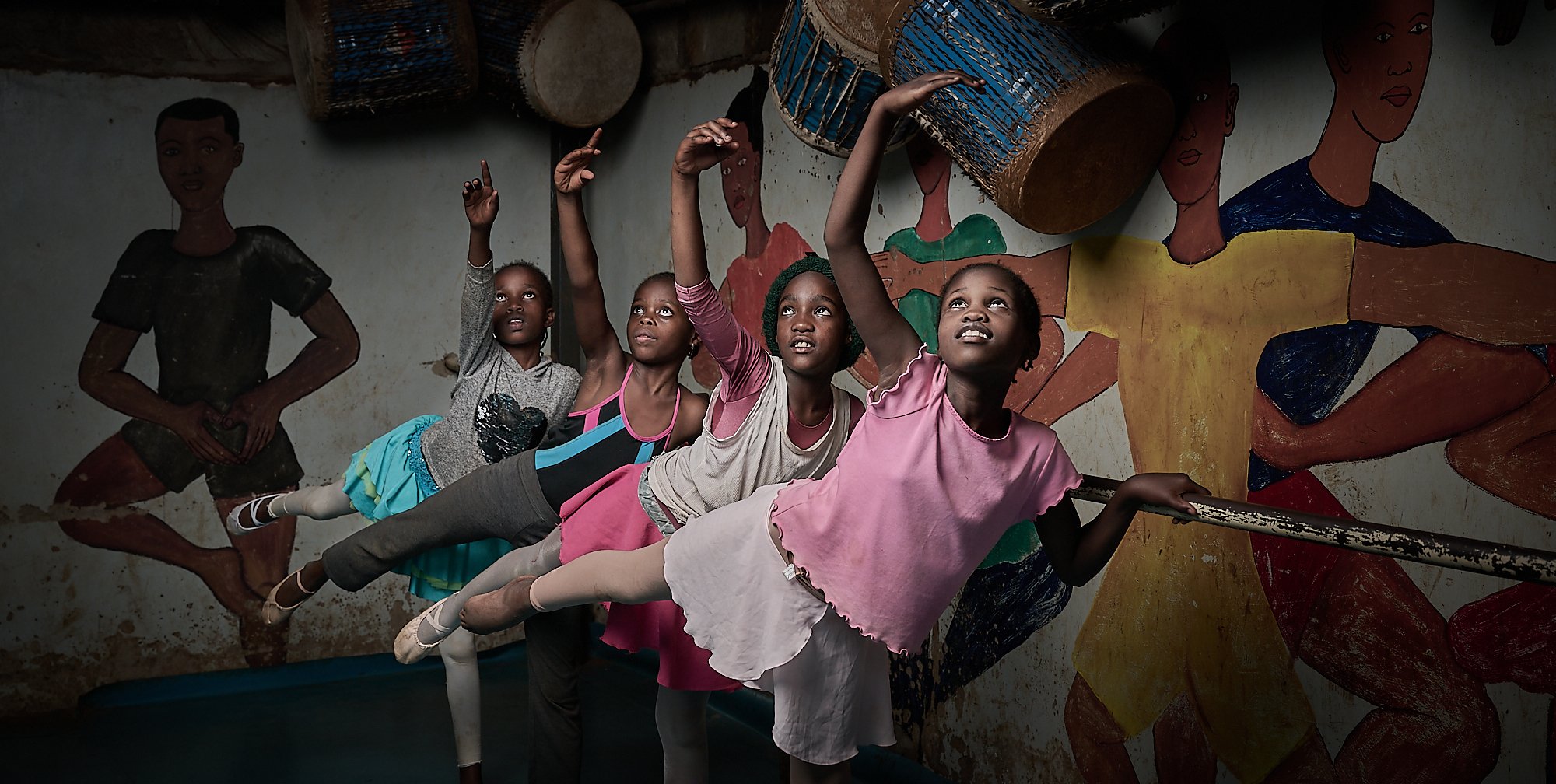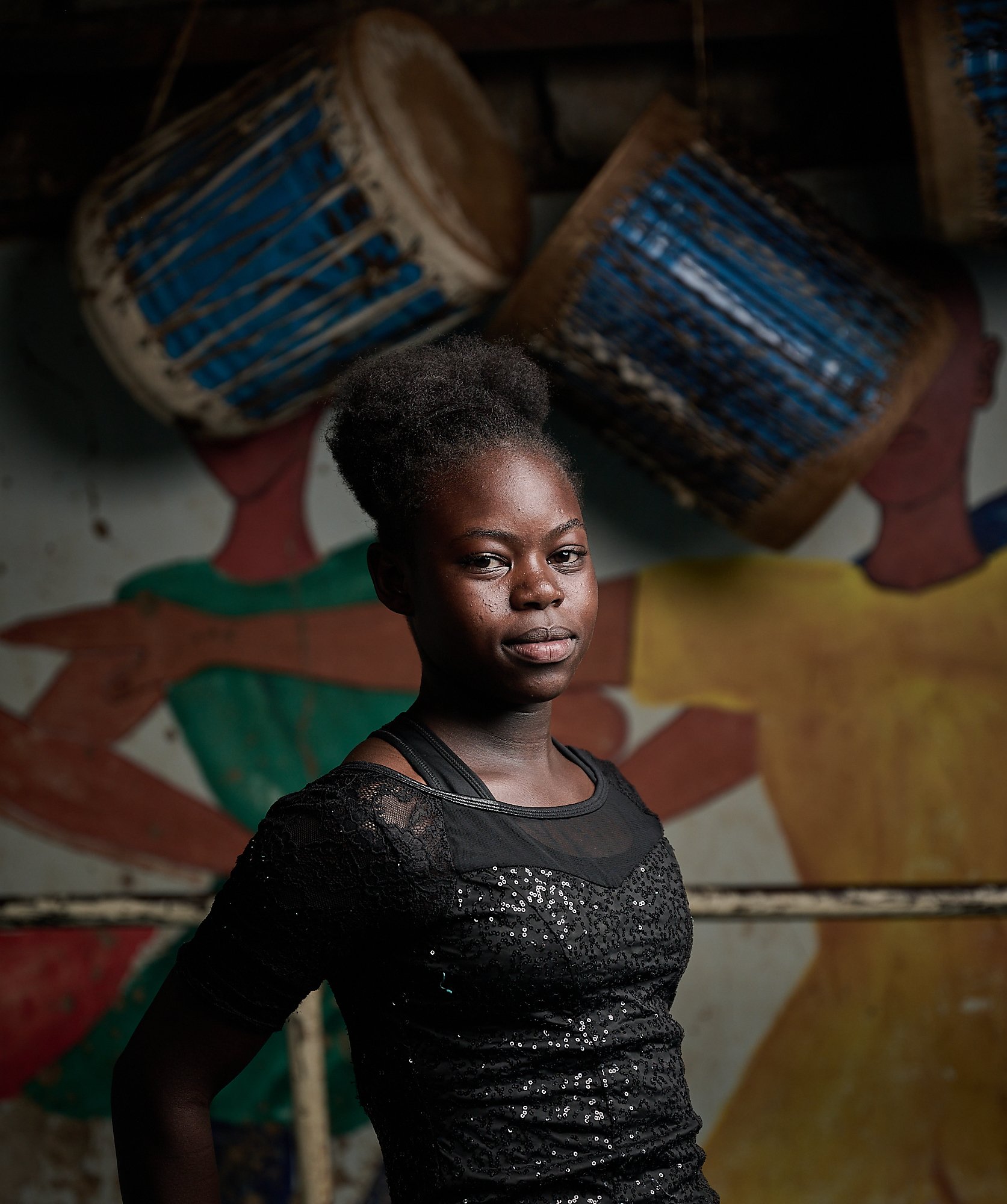Dancing in the Slum
Class in adjourned. The younger pupils of the Kibera Ballet School at the end of the day with their instructors in the middle.
There are very few things harsher and harder than living in a slum - extreme poverty, lack of even the basic infrastructure, lack of even the basest sanitation and the list goes on and on. Move that slum to Africa and the challenges literally quadruple (and, by the way, if you think there are no slums in Europe or in America, then I suggest travelling to Calais in France, Saint Barbara in Athens and many more). People who live in slums sacrifice everything simply to survive - education, hobbies, housing, jobs, prospects, sometimes even family - and at the end, they frequently simply die trying. Death rates (from multiple causes) within slums are more than 15 times higher than outside.
Kibera, right at the heart of Kenya’s capital, Nairobi, is Africa’s largest slum with more than 1 million people living in conditions most of us have never even dreamed of. When I first visited Kibera in 2007, it was inside a semi-armoured van with police escort and we drove through muddy tracks (there was no such thing as roads back then), over streams of sewage and rubbish, among huts built from discarded wood, plywood, cardboard and plastic. Back then there was no electricity or running water and gangs were running rampant.
Exercise time at the school. Wall artwork done by the students themselves
This time I saw a completely changed Kibera - paved roads, electricity and running water, sewage pipes and actual brick and mortar buildings. I saw children walking freely and without fear, shops selling pretty much everything you could think of, mobile phone stores, schools, bus stops and much more. There are now industries within Kibera - recycling, repurposing, manufacturing, clothing and much more. Kibera has evolved from a dangerous and pitiful slum into a neighbourhood. But this is not what I went to Kibera this time - it was not tourism. This time I went to Kibera to see ballet.
You might have heard of it - after all, articles (and the occasional image) about the Kibera Ballet School have appeared here and there in newspapers (and there’s a documentary currently being produced for the Independent) - but I have been trying to visit the school for the past 5 years and, until recently, it had proven impossible. This time, thanks to my ingenious local guide, Joseph, I was able to get in touch with the school’s director, Mike and following a brief period of negotiation and logistical arrangements, I was able to organise a day visit with the school. So, early on Saturday afternoon, after a really uncomfortable flight, we jumped onto our transport and found ourselves deep inside Kibera, very politely escorted by local security (organised and kindly provided by the school’s director), parked outside a completely unassuming “building”. And let me tell you, nothing you see from the outside can prepare you for the inside.
Because you see, once you cross the door, you enter a world of happy screaming children (and teenagers at varying stages of preparation) running around all over the place, some wearing tights with the most diverse range of tops, some barefoot but others with, well, ballet shoes in different states of repair, some doing stretches all by themselves, others dancing with each other even without music. It’s a truly happy and very beautiful chaos - I think I saw happier faces there than you can see in any western ballet or dance school.
We were received by Mike and his dance instructor Erik who were kind enough to walk us through the school areas and explain the work the school is doing for the community (which exceeds simple dance lessons - the school also feeds the children, organises painting and arts classes and even teaches them basic computer skills). While nothing more than a drop in the ocean of poverty that is Kibera, it shows just how much is needed to make a difference.
Doreen (left) and Benta (right), two of the more senior dancers
We arrived just before lunchtime and the school provides meals (two meals a day) to all kids between 5 and 15 made up of ingredients grown locally as well as items donated by individuals and companies across Nairobi (and in many cases, the world). After lunch, the kids were split into three grounds: those who were released to go home, those who would follow one of the younger instructors and head out to a makeshift ramp to learn skateboarding and the final group who would stay in the school for the dance lessons.
I honestly did not know what to expect - I am not, after all, an expert in ballet and it’s been years since I’ve been inside a ballet school - but what I saw literally blew my mind.
While not everyone’s favourite, poses and exercises with point shoes form an integral part of the school’s curriculum and are practiced to perfection.
First, Mike brought out a massive box of new ballet shoes. Those were purchased from a local company using monies donated online for this purpose and Mike was careful to distribute them equally and fairly across every single child and even helped them break them in. Then they started with really methodical and very organised breathing and warm-up exercises - while this was not shockingly surprising, what surprised me was that every single child, from 6- and 7-year olds all the way to the older kids followed the exercises as best they could and, I have to say, with a lot of enthusiasm. It was during this session that I started spotting what I felt would work well for the photos I was planning and let me tell you, there were some truly talented people there - graceful, flexible, fluid, athletic. Think about it - just outside the walls of this school, there is destitution and abject poverty but once inside, these kids transform into these graceful creatures filled with passion for music.
Once warm-up was done they started with the more complex dance exercises, this time separate for the younger and the older kids, with difficulty increasing with each exercise. While the “stars” among them could clearly nail the more complex exercises easily, Mike and his instructor made them all follow the regime very specifically, correcting every singly aspect of their pose, their hands, feet, fingers - everything - to a level of exactness I would never have dreamt. It was absolutely awe-inspiring - both to see the instructors’ attention to detail and the kids’ passion and dedication.
Shelly, the best dancer in the school and a true prodigy
The whole process took about 2hrs and then Mike introduced us and explained the project and what we were going to do and we were off. We spent the next 3 hours creating challenging and different images, images inspired from classical ballet shots but modified for young kids. But as we set up and shot each image, the response we got from the kids was absolutely amazing. Not only were they eager to try every single crazy idea I had come up with (and as you can see from the images, we came across some pretty far-out concepts), but would try again and again to get everything right. Once Mike saw the initial results he really got into this and this made a ton of difference: tiny details which would escape me, like finger and toe positions, slight angles and facial expressions would be scrutinised and corrected again and again until as perfect as they could be.
With Mike’s help we created some really interesting - and completely different - shots of the magic that is the Kibera Ballet School. We had planned a few shots outside the school in various spots around Kibera, but unfortunately we ran out of time and, according to Mike and the team, Kibera is not the safest place on a Saturday evening, so we left those for next time (because there will be a next time - please watch this space for an announcement in the next two months or so…really exciting things are coming!
I hope you like the images and you check out the charity which supports them. If you feel like donating, do so because truly, they’re worth it.
The images below were crafted with the amazing assistance of the dancers - Mary Gloria, Kaitlyn, Shelly, Natasha, Rose, Jasmine, Benta, Doreen, Lynet, Emmanuel and Ostin to name just a few. I could not have been more thankful to these kids who were not only open to doing something they had never done before but jumped into every image with energy, laughter and curiosity.




























